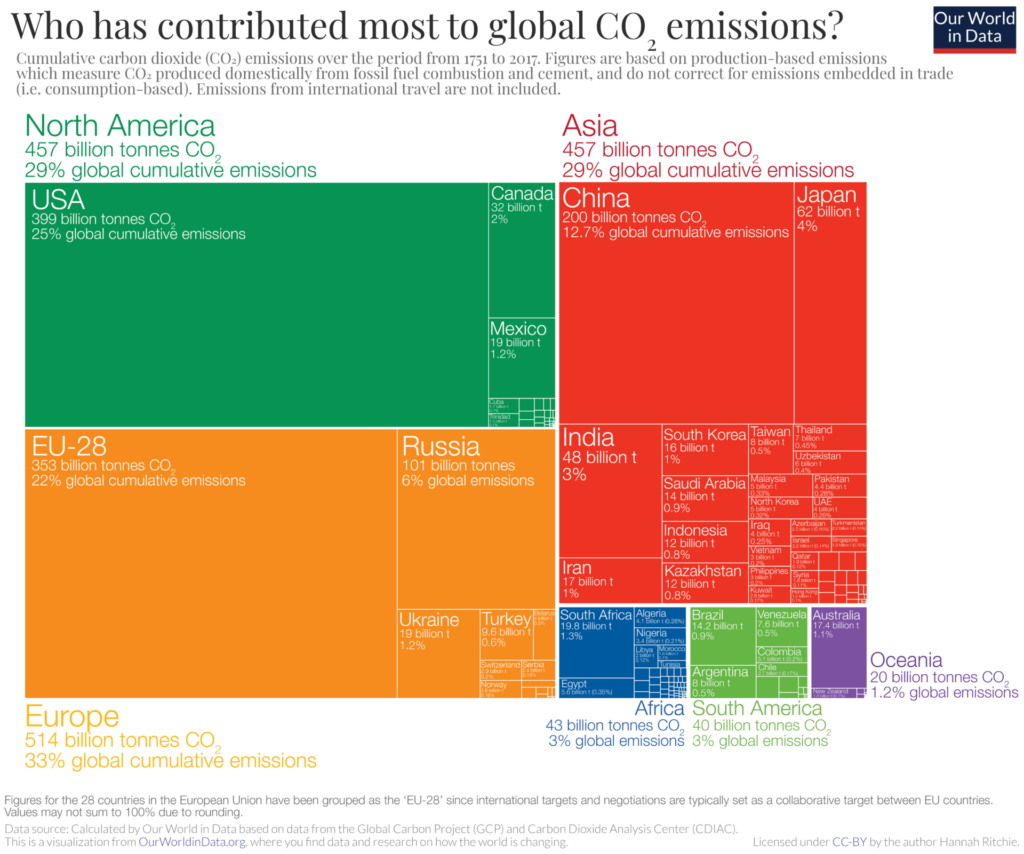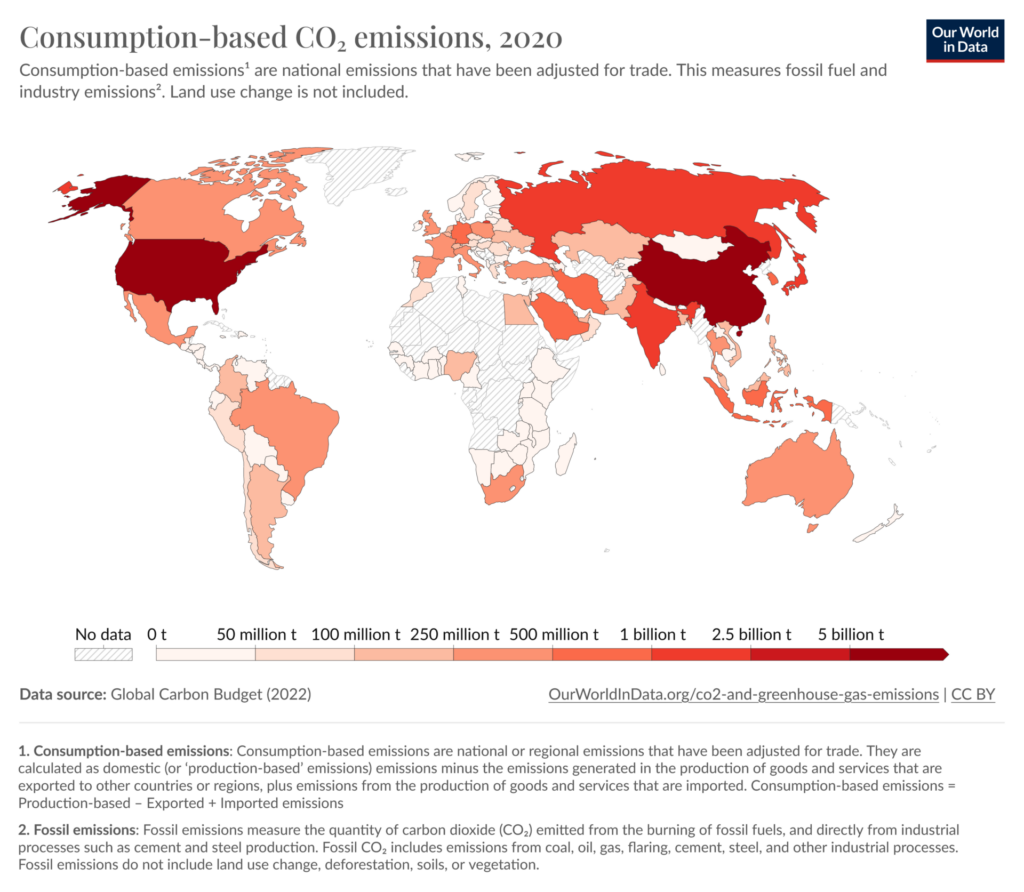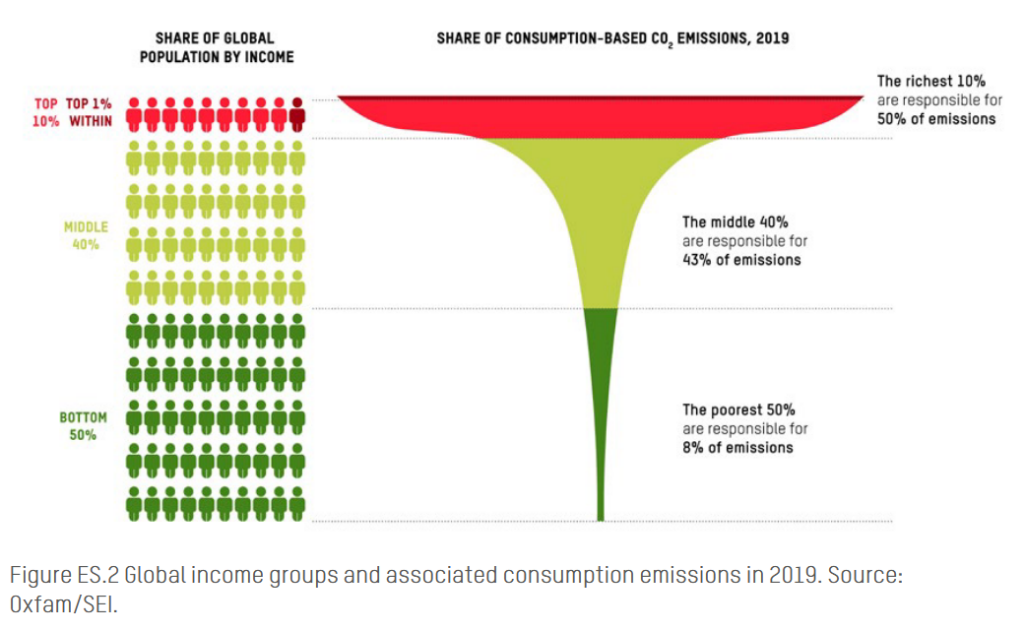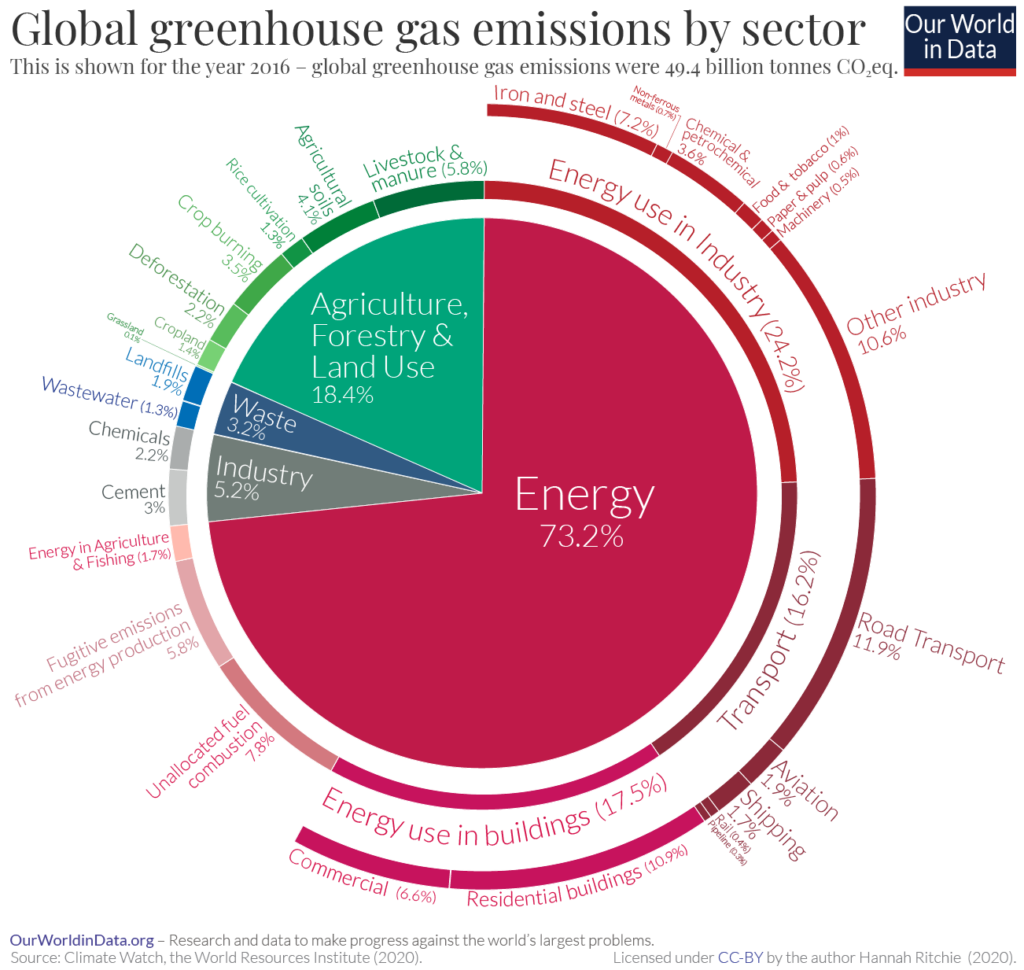COP30: What were the outcomes?
This year’s international climate conference, COP30, wrapped up in Belém, Brazil, last weekend. Following the failure of previous COPs to deliver the ambition and action needed to avert catastrophic climate…
Read More
Written by Olivia Nater | Published: December 1, 2023
How much do different countries, sectors, and income groups contribute to climate change? Who are the biggest culprits? What are the top climate solutions? You might think you already know the answers to these questions, but you may be surprised. As this year’s most important international climate meeting kicks off in Dubai, let’s take a look at some key climate facts.
Yesterday was the first day of the 28th Conference of the Parties to the UN Framework Convention on Climate Change (UNFCCC), also known as COP28. In 2015, at COP21 in Paris, world leaders agreed to limit global warming to less than 2°C and “preferably” no more than 1.5°C above pre-industrial levels, due to a high risk of triggering dangerous tipping points beyond this threshold. Global greenhouse gas emissions have continued to increase since then, however, and governments’ current pledges (called Nationally Determined Contributions or NDCs) put us on track for 2.5-2.9°C of warming, which spells disaster for humanity and the planet. At COP28 in Dubai, delegates will try to agree on new commitments and plans to cut emissions in line with the Paris Agreement, and to protect lives and livelihoods from the rapidly escalating impacts of the climate crisis.
The international scientific authority on climate change, the Intergovernmental Panel on Climate Change (IPCC), has calculated that to have a 50 percent chance of meeting the 1.5°C Paris target, by 2030, the world must cut greenhouse gas emissions by 43 percent relative to 2019 levels, and by 60 percent by 2035. Despite being aware of these requirements, governments are planning to produce around 110 percent more fossil fuels in 2030 than would be consistent with limiting warming to 1.5°C. In addition, if greenhouse gases continue to be emitted at the current rate, we will likely breach the critical 1.5°C threshold before the end of this decade.
Governments’ ongoing failure to slash emissions makes every COP even more critical than the last one, and the longer we delay meaningful action, the more rapid and drastic emissions cuts will need to be to meet the Paris target. So where are the majority of emissions coming from, and what needs to be done?
According to the IPCC, GDP per capita (a representation of wealth) and population growth are the strongest drivers of emissions. This is unsurprising — as reflected in the IPAT equation co-developed by Population Connection co-founder Paul Ehrlich, our impact on the environment is a product of how many of us there are, how much each of us consumes, and how we use technology.
While the poorest countries are facing the brunt of impacts, including extreme temperatures, catastrophic weather events, and worsening water and food insecurity, it is industrialized nations that are responsible for the vast majority of emissions throughout history. The United States alone has produced more carbon dioxide (CO2) emissions than any other country to date, and is responsible for a quarter of all CO2 emitted since the mid-18th century. The 28 countries of the European Union are the second largest contributor, responsible for 22 percent of historical CO2. North America and Europe thus have a moral obligation to lead global decarbonization efforts, and to help the most vulnerable countries in their mitigation and adaptation efforts.

However, these regions cannot tackle the climate crisis alone. While China is responsible for around 13 percent of historical emissions, it is nowadays by far the biggest national emitter, accounting for more than 10 billion tons of CO2 consumption-based emissions per year — almost twice as much as the U.S. India, where per person emissions are still relatively low, is in third highest place for consumption-based emissions due to its large population, producing around 2.3 billion tons of CO2 annually. While per capita emissions have decreased in recent decades in the Global North thanks to increasing uptake of renewable energy, less carbon intensive fuels, and improvements in energy efficiency, they are increasing in developing regions as poverty declines. This means that the growth in global emissions is nowadays driven by emerging economies. Of course, low- and middle-income countries have every right to raise their living standards. To meet climate targets, the most overconsuming nations, including the U.S., must cut emissions much faster and help developing countries switch to greener energy sources.

 According to Oxfam, the world’s richest 1 percent (those with a Purchasing Power Parity (PPP) adjusted income of $140,000 or more per year), making up only around 77 million people, were responsible for 16 percent of global CO2 consumption-based emissions in 2019, the same amount as the total emissions of the poorest 66 percent of humanity (around 5 billion people). The poorest 50 percent of the global population — 4 billion people earning less than $5,000 per year — contributed only 8 percent of 2019 emissions.
According to Oxfam, the world’s richest 1 percent (those with a Purchasing Power Parity (PPP) adjusted income of $140,000 or more per year), making up only around 77 million people, were responsible for 16 percent of global CO2 consumption-based emissions in 2019, the same amount as the total emissions of the poorest 66 percent of humanity (around 5 billion people). The poorest 50 percent of the global population — 4 billion people earning less than $5,000 per year — contributed only 8 percent of 2019 emissions.
The richest 10 percent alone were responsible for half of all consumption-based emissions in 2019, but we would be wrong to think these are all yacht- and private-jet-owning billionaires. Based on Oxfam’s calculations, the world’s wealthiest 10 percent include everyone earning at least $41,000, which is close to the U.S. mean income.
Oxfam’s analysis demonstrates how much both wealth and population numbers matter once you get above a certain threshold for both. The “middle 40 percent,” around 3 billion people, contribute 43 percent of emissions even though they earn just $5,000-$41,000.
 The biggest source of greenhouse gas emissions is energy use in industry, responsible for around a quarter of global emissions, followed by agriculture and land use (18.4 percent), energy use in buildings (17.5 percent), and transport (16.2 percent).
The biggest source of greenhouse gas emissions is energy use in industry, responsible for around a quarter of global emissions, followed by agriculture and land use (18.4 percent), energy use in buildings (17.5 percent), and transport (16.2 percent).
Breaking this down further, iron and steel production makes up the biggest share of industry emissions and is responsible for 7.2 percent of global emissions, followed by chemicals and petrochemicals such as the manufacturing of fertilizers and refrigerants, and oil and gas extraction (together responsible for 3.6 percent). For agriculture, livestock and manure are the worst culprits, contributing 5.8 percent of global emissions.
The food system as a whole — including refrigeration, food processing, packaging, and transport (which in the above chart are included in other sectors) — accounts for around one-quarter to one-third of global greenhouse gas emissions, which is why scientists are calling for a radical transformation of how we produce and consume food. In fact, if you consider the higher end of this estimate, food becomes the biggest driver of climate change, contributing even more emissions than energy use in industry.
Homes make up the largest share of energy use in buildings, accounting for 10.9 percent of global emissions, and it is road transport that is the worst offender in the transport sector, responsible for 11.9 percent of global emissions. This may be surprising as you’ve likely heard that avoiding flying is one of the best things you can do for the climate — this remains true because of the huge per person carbon footprint of air travel. The reason road travel takes up a much larger share of transport emissions than aviation is because billions more people drive than fly. However, the share of aviation is expected to grow as poverty decreases and flying becomes affordable to a larger share of the population.
Now that we know where most emissions are coming from, we can better understand the most effective climate solutions. Project Drawdown has ranked all available climate actions based on how much CO2-equivalent emissions their implementation would prevent or sequester by 2050 in line with limiting global temperature rise to 2˚C. They found that reducing food waste and adopting plant-rich diets are the first and second most powerful actions, reducing emissions by 88.5 and 78.3 gigatons respectively. As the number of people on Earth affects emissions in every sector, the third most impactful action is slowing population growth by removing barriers to family planning and education, which would reduce CO2-equivalent emissions by 68.9 gigatons by 2050. Most importantly, this is also key to helping countries build resilience to the climate crisis and would save countless lives. Better refrigerant management, tropical forest restoration, and onshore wind turbines are the fourth, fifth, and sixth most powerful actions, respectively.
The actions laid out by Project Drawdown are not an à la carte menu — COP28 delegates should be pursuing all of them and should pay a lot more attention to the top solutions listed above, which are still widely neglected in climate talks. Negotiations must also ensure that those who bear the most responsibility for historical emissions contribute their fair share to global mitigation and adaptation efforts. Let’s hope we’ll finally get the climate conference the world desperately needs.